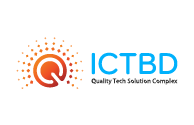Quang Trung Software City (QTSC) is the first and largest centralized software park in Vietnam. Right from the beginning, QTSC was designed to be a software city which covers 43 ha. To date, QTSC has attracted 150 information technology (IT) companies. With 20 office buildings, five IT training centres, four bank transaction offices, 15 parking lots, an expert accommodation and dormitory area, an underground power grid, a modern wastewater treatment system, nursery schools, clinics, a business incubation centre, a business support centre and other facilities, QTSC has officially become a “software city” for 20,555 people to study and work.

To date, QTSC is the first software park in Vietnam to obtain the Information Technology Park Certificate from the Ministry of Information and Communications. On March 3, 2016, the Prime Minister agreed to pilot ways for breakthrough development of software industry and innovative start-up to promote its current role and brand name: QTSC, Information Technology Park of the Vietnam National University of Ho Chi Minh City. On October 17, 2017, the Ministry of Information and Communications (MIC) issued Decision 1765/QD-BTTTT establishing the Chain Management Council and Decision 1766/QD-BTTTT on regulations on organisation and operation of the QTSC Chain. Particularly, QTSC is the core of the chain to inherit and promote the QTSC brand. Chain members are entitled to preferential policies applicable to IT parks and hi-tech parks, have independent legal status, and voluntarily associate and cooperate with each other based on development cooperation programmes between Ho Chi Minh City with organisations and units located in Vietnam.
Recently, according to KPMG's latest advisory group, QTSC ranked third among Asia's eight technology parks by performance-related factors such as occupancy, compensation policy and telecommunication infrastructure; and ranked fourth in tenant scale and performance-related factors like attracted FDI value, FDI company scale and employee workmanship. In general, QTSC stands out among high-tech parks, with preferential policies that draw a wide range of investors in various sectors from all over the world. Especially, tenants are growing sustainably and strongly.
Since its inception, QTSC has encountered numerous hardships and challenges in administration and operation of a “software city” such as ensuring the infrastructure system is ready around the clock, controlling order and security, and improving working capacity to better serve growing demands of tenants and other stakeholders. In that context, QTSC has sought localised administration solutions to address existing challenges and keep pace with international integration trends to elevate QTSC to the level of advanced technology parks in countries that base on information technology.
In early 2016, QTSC actively applied technologies to deal with existing issues of localised administration in a bid to bring QTSC to a new plane, taking another progressive step towards smart city status in the country with three main objectives: (i) improving governance quality, (ii) increasing tenant satisfaction and (iii) developing the QTSC brand. To achieve these goals, QTSC's plan focuses on three steps: Building and applying information technology in localised administration, providing digitalised support and service for the community, connecting technology and data applications on the same platform, sharing, analysing, utilising data and forecasting future developments to work out development policies. These contents will be carried out simultaneously and immediately to improve performance results.
From its initial results, QTSC continues to optimise, extend and further develop technology applications, gradually integrate data and applications on one platform and plan to open the platform for third party to use. Applying the smart city model to QTSC is a long-term process and an important goal in making QTSC among the best of its kind in Asia.
QTSC





 Tiếng Việt
Tiếng Việt










